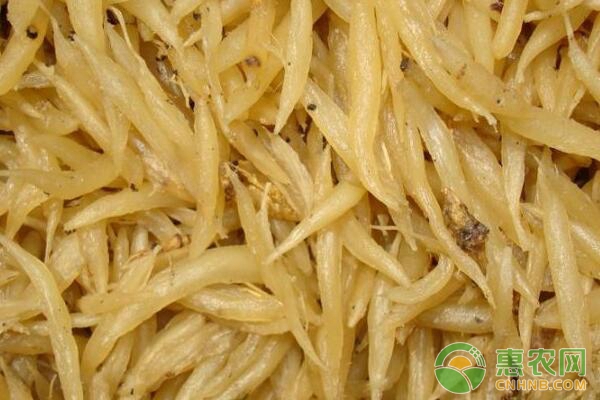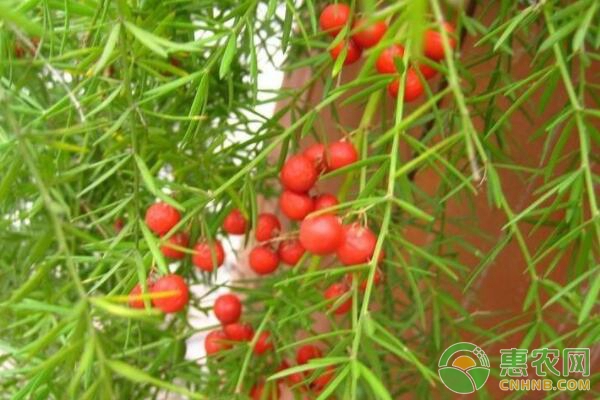In the previous article, Xiaobian said that the artificial planting technology of Asparagus, many readers reflect the content of field management, this is not, Xiaobian will quickly update the relevant knowledge of Tiandongmen field management.

Seedling management
Seedling management takes about a year, and has the following work.
Set up a shade shelter
After the seed is emerged, the straw on the scorpion is first removed. The seedlings of Asparagus are most afraid of strong direct sunlight. It is necessary to set up a shade shelter in time to block the sunlight so as not to burn the seedlings.
Weeding
When the seedling height is 3~5 cm, the weeds should be removed in time to avoid competing with the seedlings. When weeding, be careful not to pull out the seedlings with the grass, or to loosen the roots of the seedlings. When the soil is too tight, the soil can be loosened 1~2 times. At the same time, combined with weeding for topdressing.
3. Top dressing
Tianmen winter seedling period, topdressing 3 times. The first top dressing is carried out in the spring, when the seedling height is 3~5 cm, and the compound fertilizer is 10-15 kg per 1/15 hectare (1 mu). The second top dressing is in the summer, when the seedlings can grow to 10-15 cm. The third time in the fall, when the seedling height is about 20 cm. The second and third top dressing varieties and the quantity method of fertilization are basically the same as the first time. Watering should be done in time after topdressing.
4. Watering
The seedbed should be properly watered to keep the soil moist. In case of drought, the amount of water should be increased and watered 2 to 3 times a week.

Transplanting
Transplanting time
The seedlings are cultivated after about 1 year, and when the seedlings grow to 15~25 cm, they can be transplanted. Generally, the seedling volume of 1/15 hectare (1 mu) can be transplanted 3/5 to 2/3 hectares (9-10 mu) in the field. Transplanting can be transplanted from October to November of the year or March of the following year.
2. Seedling
Excavate at a distance of 10 cm from the root. Use a hoe to gently dig the soil at the root to avoid breaking the roots. Transplanting seedlings should be healthy and strong, and need to bring 3 to 4 roots.
3. Seedbed finishing
The transplanted seedbed should choose a gentle slope. Open the "pot bottom" type hole on the raft, the line spacing is 50 cm, the plant spacing is 25 cm, the hole depth is 14 cm, and the diameter is 20 cm. After opening the hole, apply about 125 grams of organic fertilizer per plant and mix well with the soil. For every 2 rows of Tianmen winter seedlings, the distance between the crops should be reserved.
Intercropping
Asparagus is a perennial plant. In order to use the land effectively, it is possible to plant suitable economic crops according to local conditions. In some areas of southern China, laurel trees are often used as intercropping trees, and good results have been achieved. It can be planted in the winter of the Aswan, first use the white lime powder to make the mark by the distance between the row spacing and the plant spacing of 2 meters. The laurel tree planted is generally 100 cm high and is planted at the fixed point, every two rows. A group of laurel trees can be planted between Asparagus, which can be a good support for Asparagus, and can also regulate the transmittance of Asparagus plants. The stems of Asparagus will slowly grow around the laurel tree.
5. Transplanting and planting
When transplanting and planting, one seedling per hole was placed. First use the thumb, forefinger and middle finger to force out 3 small pits at the bottom of the hole, then spread the small roots in the pressed pit so that the seedlings can stand upright in the hole. Finally, cover the root block with fine soil and gently compact it. Immediately after transplanting, apply fertilizer water.
6. Drenching fertilizer water
After transplanting, in order to fully integrate the new roots with the soil and increase the survival rate, it is necessary to apply a thin farmyard manure. The ratio of fertilizer to water is 1:2. Before fertilization, the fertilizer and water should be evenly mixed and poured along the seedlings, and 250 grams of fertilized water per plant.
The cultivation of Asparagus is generally the first year of seedling management, and the second year is mainly seedling management. In the third year, it entered the fast growing period. The fourth and fifth years entered the harvest period. Because Asparagus is a perennial herb, field management cannot be ignored.

Field management
Asparagus is more suitable for planting in vast areas south of the Yangtze River in China. Asparagus after transplanting, it entered the stage of seedling development. The field management of the second year of Asparagus cultivation mainly has the following main points.
Irrigation and weeding
Generally weeding 3 times a year, in the spring of March to April, the summer of June to July, and the autumn of September to October. Do not get too deep when weeding, so as not to damage the roots. The cultivating is to achieve the purpose of loosening the soil and completely eliminating the weeds. During the growth process, if the weeds grow more or the soil is compacted, the number of cultivating can be appropriately increased. Be diligent in observing. In the southern region, if heavy rains wash away the soil at the roots of the plants, the roots exposed to the ground at this time are easily sunburned or dried. Therefore, it is necessary to cultivate the soil in time to ensure the normal growth of the roots.
2. Top dressing
Weeding should be carried out in combination with weeding every year. Asparagus is a kind of fertility-resistant plant. In the growing season, it will be applied in different fertilizers, and the yield will be obviously improved. The most important part of Asparagus cultivation is seedling, shading, fertilizer and water management, and fertilize 3 times a year: farmyard manure, soil fertilizer, and organic fertilizer.
In the first year after transplanting, the transplanted seedlings can be transplanted from 20 cm to 60 cm. The first fertilizer was applied about 40 days after transplanting, and the seedlings were grown to about 20 to 25 cm. In pursuit of thin farmyard manure, the ratio of farmyard manure to water is 1:2, and 500-700 kilograms per 1/15 hectare (1 mu) is applied to make the plant grow vigorously. The first annual topdressing in the future will be from March to April. The second top dressing was carried out from June to July. At this time, the plant can grow to 30-35 cm, and apply organic fertilizer 2500-3500 kg per 1/15 hectare (1 mu). Do not let the fertilizer touch the root when applying fertilizer. It should be fertilized in the ring and then covered with soil to increase the weight of the new root. The third fat was applied from September to October. Generally, the plant can reach 40~60 cm high, and each 1/15 hectare (1 mu) is about 3500 kg of soil and fertilizer, so as to facilitate the wintering of the plants and make the growth more vigorous in the coming year. If there is more rain after fertilization, there is no need to fill the water.
3. Watering drainage
Asparagus generally prefers a warm and humid environment, watering once a month and a half after transplanting. Growers can control the amount of watering based on actual local rainfall. Soil moisture is maintained at 50% to 60%. In case of drought, it is necessary to increase irrigation 1 or 2 times in order to resist early seedlings, otherwise it is generally unnecessary to increase irrigation.
The irrigation and drainage of the Tianmendong planting ditch should be regularly maintained. In the summer, there are heavy rains and floods in the southern part of the country. In the second year of cultivation, the growth of Asparagus is slow, and the growth in the third year is accelerated. In addition to intercropping high-stalk crops or economic trees, it is also possible to set up brackets according to the local topography.
4. Set up the bracket
When the stems grow to 50-80 cm, the bamboo rafts are used as a scaffold to grow the stems. The specific method is to take a bamboo raft that is 1~2 meters long and insert it into the soil, about 20 cm deep. The bracket is too shallow to be blown down by the wind. Insert 3 bamboo stalks per plant, then cross the tops of adjacent bamboo rafts and fix them together to prevent tilting. Then wrap the stems clockwise around the bracket. The third year of cultivation of Asparagus is in the rapid growth period, and the plant grows to about 1 meter. In the fourth year, it can grow to about 1.5 meters and enter the harvest period. It is important to note that each year we should increase the amount of fertilization by 20% to promote flowering, fruiting, and root growth, and also to increase production. Other field management is basically the same as the second year. In the fifth year of cultivation of Asparagus, the plant can be as high as 2 meters or more, and the Asparagus is no longer fertilized.
Eas Detector,Eas Anti Theft System,Electronic Article Surveillance,Sensormatic Anti Theft System
ZHEJIANG BOSHINE ELECTRONIC SECURITY CO.,LTD , https://www.boshine.com
